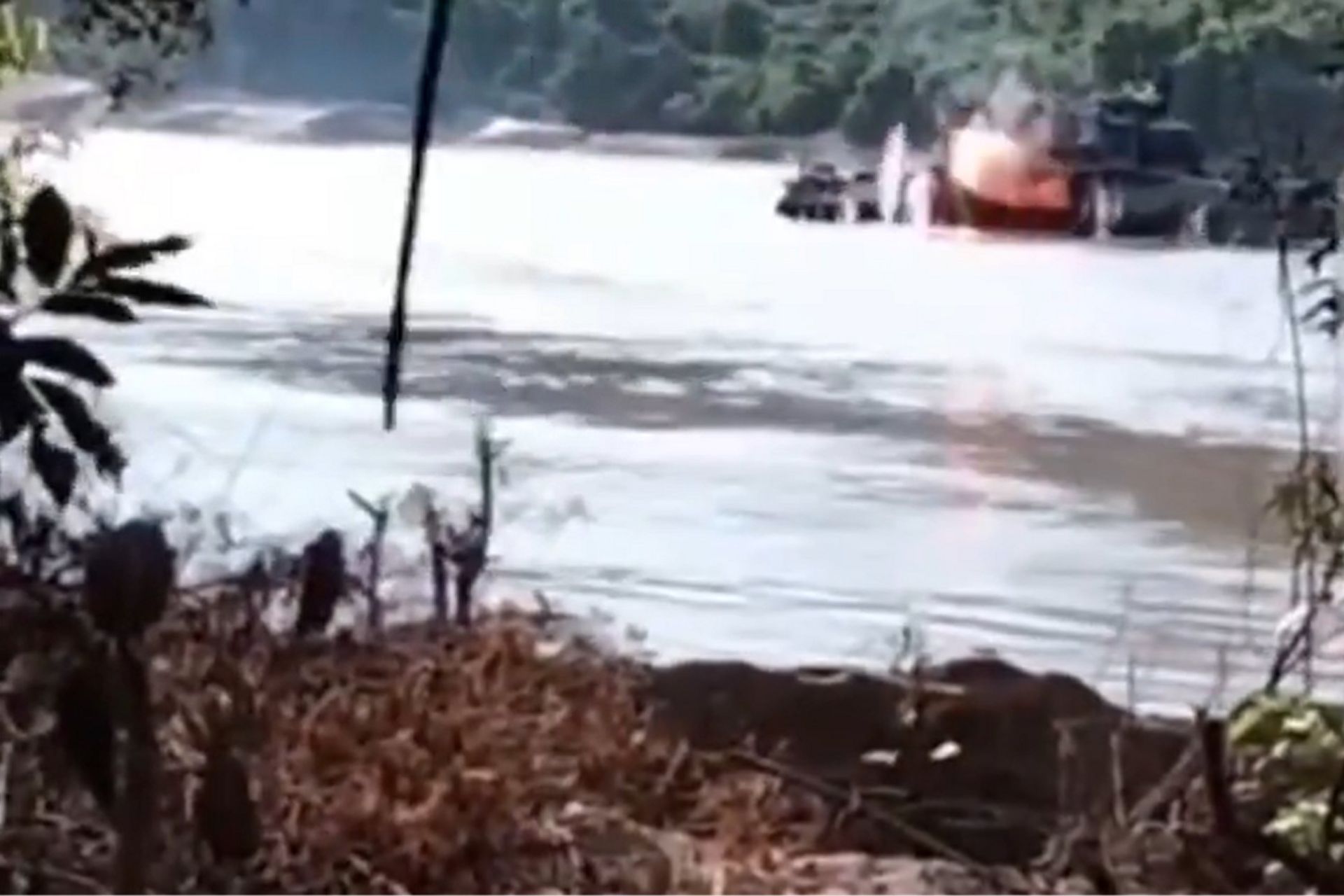Breaking News
Kachin Independence Army attacks Myanmar Navy vessel on Irrawaddy River.
According to information published by Clash Report on September 26, 2024, a Myanmar Navy convoy traveling along the Irrawaddy River was ambushed by the Kachin Independence Army (KIA).
Follow Army Recognition on Google News at this link

Myanmar Navy vessel hit by recoilless rifles. (Picture source: Twitter account of Clash Report)
KIA forces reportedly hit at least two naval vessels, halting them temporarily before they were towed to the nearby area of Tigyaing. The assault occurred as the convoy, consisting of several ships, was making its way upriver, likely to transport supplies and military equipment to junta-controlled territories further north.
This recent attack is part of an ongoing pattern of guerrilla warfare tactics employed by the KIA, one of Myanmar’s largest ethnic armed groups, which has been engaged in an armed struggle against the military for decades. The KIA's involvement in the current conflict intensified following the February 2021 military coup, which led to widespread civil unrest and armed resistance across the country. Ethnic armed groups like the KIA, once focused primarily on local autonomy, have since aligned more closely with anti-junta forces, including the People’s Defense Forces (PDF), in opposition to the regime.
The Irrawaddy River, Myanmar’s largest and most vital waterway, has become a key battleground in this struggle. Control of the river allows the military to transport troops, supplies, and weapons to remote areas, and in turn, it has become a target for anti-regime groups seeking to disrupt these movements.
The KIA’s use of recoilless rifles in the ambush highlights their adaptive combat strategies. Such weapons, while less effective against heavily armored targets, can cause significant damage to lightly armored vessels and disrupt military logistics. The attack on the naval convoy also signals the KIA’s intent to challenge junta control over waterways, a critical artery for the regime’s supply chain in northern Myanmar.
For Myanmar’s military, controlling the Irrawaddy is not only about logistics but also about maintaining a psychological edge over the resistance. By securing the river, the junta seeks to demonstrate its ability to project power across a broad swath of territory, especially in regions like Kachin State, which have long been centers of ethnic resistance.


























